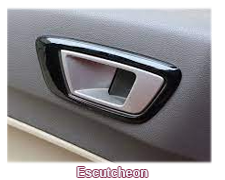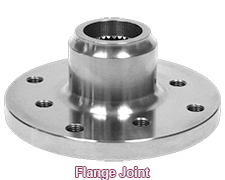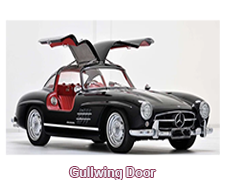Got a question, a comment, a suggestion or an offer??? - FEEL FREE TO CONTACT US ANYTIME!!
A guide to acquiring, restoring and maintaining UK or European Classic Cars of the Fifties and Sixties- as well as a recollection of the iconic cars of the era and the visionaries that produced them.

EDGE GUARD: Describes the U-section strip fitted to panel edges to protect them against chipping.
Describes the U-section strip fitted to panel edges to protect them against chipping.
EDGE JOINT: Describes the joint that is formed when two pieces of metal are overlapped.
ENGINE COVER: Describes the panel that conceals the engine in a mid-engine car.
ESCUTCHEON: Describes a panel or part used to conceal another part.
FENDER BEADING: Describes a strip used to cover the seams between fenders that are not customarily detached and adjacent body panels. In most cases, this strip is chromed and a permanent attachment.
FENDER LANDING SECTION: Describes the horizontal flange that sits at the top of the flitch plates providing a platform for the fenders, including the mounting threads or spot-welds for attaching the fenders
FILLER CAP: Describes a cover that seals off a filler hole in a petrol tank.
FILLER DOOR: Describes a hinged door (usually less than six inches square and painted the body colour) that covers the gas cap and filler neck on most private cars.
FILLER NECK: Describes the funnel connected to the petrol tank, usually covered with a cap.
FILLER ROD: Describes a metal wire melted and added to the welding puddle to produce the desired increase in bead thickness.
FILLER STRIP: Describes a free-flowing rubber inserted under the tread when added thickness is needed.
FIREWALL: Describes the metal partition between the driver's compartment and the engine compartment. It is located below the windshield on front-engine vehicles, while on rear-engine vehicles, it is located below the backlight (i.e., back window). A firewall aims to protect the driver and passengers from engine fires, noise, and fumes.
FLANGE: Describes a projecting rim or collar fixed on an object to keep it in place.
FLANGE HEIGHT: Describes a measurement from the top of a flange to the bead seat, with the difference between the overall diameter and nominal rim diameter being precisely half.
FLANGE JOINT: Describes a coupling between two shafts forming two disc-shaped flanges on the ends of the shafts, which are bolted together.
FLANGING: Describes the action of attaching a flange to a pipe
FLARE: Describes a flange applied to a piece of tubing to provide a means of sealing two similarly angled areas formed in fitting the body and the nut.
FLARED WHEEL ARCH: Describes a wheel arch bent outwards around its circumference, usually to accommodate wider wheels and tires.
FLOORBOARD: Describes the flat base panel of a vehicle, originally a collection of wood planks.
FLOORPAN: Describes the large, stamped metal part of the car's body usually assembled from several smaller stampings, which takes in the driver/passenger capsule while also acting as the foundation for many of the car's mechanical parts.
FORGING: Describes a process combining hammering or squeezing under heat that transforms solid metal into shapes of varying cross-sectional material thickness.
FRONT APRON: Describes the panel behind and below the front bumper, joining the bottom ends of the front fenders.
FRONT BUMPER: Describes a guard whose role it is to protect the front of a vehicle in the event of an accident.
FRONT END: Describes the body area incorporating the leading edge of the fenders, the headlights, radiator grille and bumper that make up the vehicle's front.
FRONT NOSE SECTION: Describes the front section of a car's body that uses one structure to make up the front end.
FRONT PANEL: Describes a panel joining the front fender forming a mounting for the headlights, grille, and air ducts into the engine compartment.
FRONT SPOILER: Describes the air deflector on the front of a car, aerodynamically designed to cut the wind resistance around the vehicle.
FUEL FILLER FLAP: Describes a piece of rubber about 4" square and very thin, located behind the filler door. When the door is opened, the flap falls to protect the body from the fuel nozzle.
FUEL FILLER NECK: Describes the upper end of the fuel filler tube leading down to the fuel tank, where the fuel hose nozzle is inserted when refilling.
FUEL FILLER TUBE: Describes the tube leading down to the fuel tank,
FULLY GALVANISED BODY: Describes a body shell which, except for aluminium and plastic parts, is produced entirely of double-sided galvanised steel.
GULL-WING DOOR: Describes a roof-hinged door that opens upward first used on the Mercedes-Benz 300 SL in the early Fifties.
GUSSET: Describes a triangular plate secured across an angle to reinforce a joint.
GUSSET PLATE: Describes a triangular plate secured across an angle to reinforce a joint.
HAIRLINE CRACK: Describes a tiny stress fracture liable to form due to strains in material or extreme temperature differences.
HARDTOP: Describes a two-door or four-door vehicle without a B-post providing the impression of uninterrupted glass along the side of the car.
HATCHBACK: Describes a car design where the boot and lid are replaced by a rear hatch, including the rear window, while the back seat folds down.
HARDTOP CONVERTIBLE: Describes a fixed-roof coupe whose roof does not retract into the trunk, giving the impression of being a convertible,
HARDTOP STAND: Describes a type of collapsible stand that can hold a detached hardtop in a vertical position when stored.
HEADER BAR: Describes the front lateral bar on a car roof made of sheet steel that attaches to the top of the windshield frame and is usually shaped to match the top front edge to the curvature of the windshield.
HEADROOM: Describes the distance between the top of a passenger's head and the inside of the vehicle roof
HEEL PLATE: Describes the vertical transverse sheet metal panel that runs across the width of the car interior at the front edge of the rear seat linking the back seat well to the floorpan and provides rigidity for both panels.
HINGE FACING: Describes a part of the door frame, including the bracing and threaded plate used to mount a hinge to the door.
HOOD BOW: Describes one of at least four struts that support the car roof, usually made of tubular steel.
INJECTION-MOULDED: Describes objects produced by injection moulding.
INJECTION MOULDING: Describes the method of fabricating objects using thermoplastics.
INNER FENDER PANELS: Describes the set of vertical panels mounted to the left and right of the engine bay, providing the mounting flanges for the fenders and the top suspension.
INNER SILL: Describes the hidden part of the sill customarily located behind the outer sill panel, serving to reinforce the underbody.
JACKING POINT: Describes a specially strengthened point or points on the underbody of a car where the jack can be safely placed.
KICK PANEL: Describes a vertical panel wall enclosed by several structural members.
KICKUP: Describes the terminology used to describe a section of the frame and body raised to provide clearance for the front and rear suspension system or axles.
LAMP APERTURE: Describes the opening in a sheet metal panel where the headlight or taillight can be mounted.
LAMP PANEL:  Describes the panel that holds either a headlight or taillight.
Describes the panel that holds either a headlight or taillight.
LEGROOM:  Describes the amount of space available to passengers to stretch their legs in a vehicle.
Describes the amount of space available to passengers to stretch their legs in a vehicle.
LAYING UP: Describes the process of adding several layers of fibreglass mat and resin to form a glass-reinforced plastic (GRP) shell.


